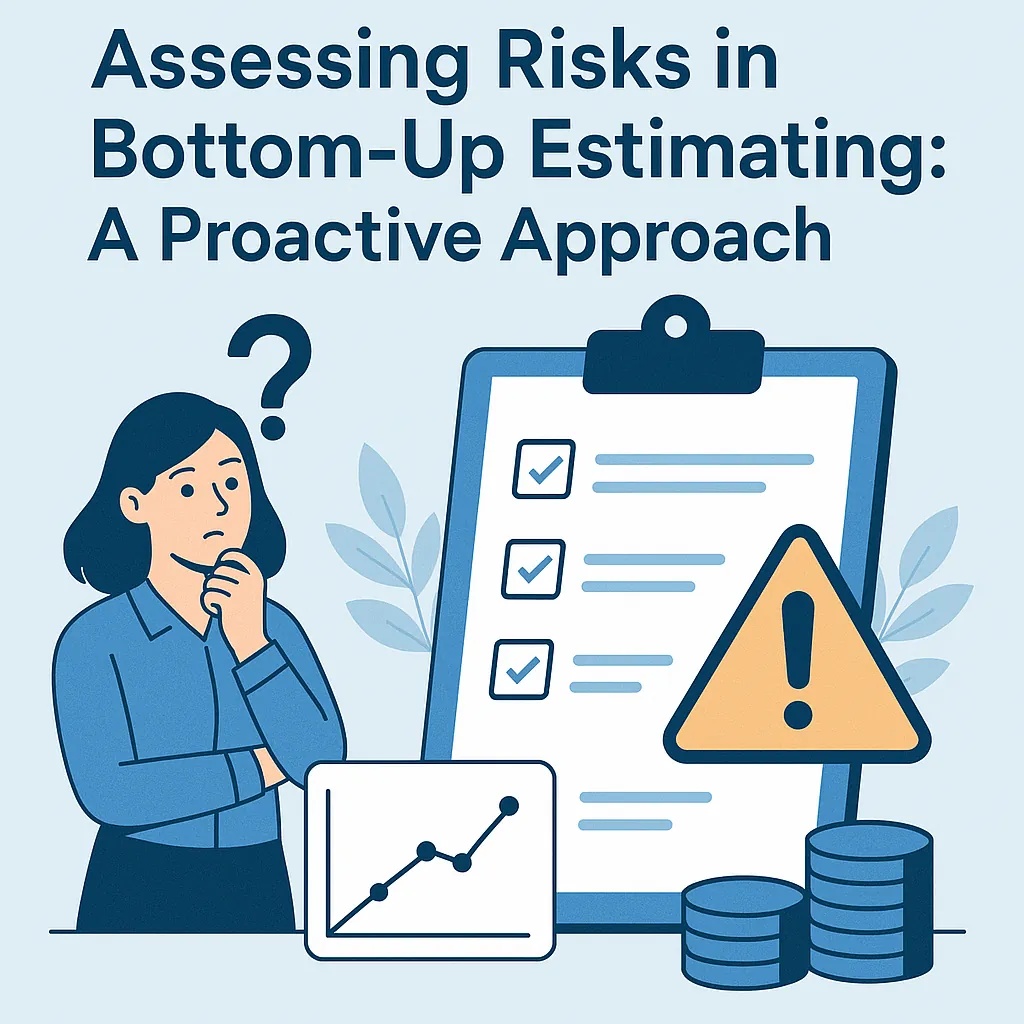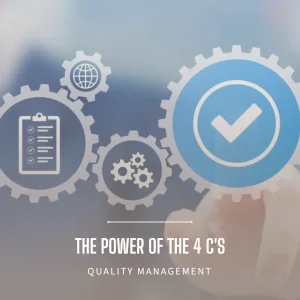Introduction to Bottom-Up Estimating
Bottom-up estimating is a project management technique that involves breaking down a project into its smallest components, such as individual tasks or work packages, and estimating the time, cost, and resources required for each of these elements. This method is highly regarded for its accuracy and reliability, as it ensures that all aspects of a project are considered, thereby reducing the likelihood of overlooked costs or time requirements [1][10].
Definition of Bottom-Up Estimating
In essence, bottom-up estimating starts at the granular level, assessing each small component of the project before aggregating these estimates to form a comprehensive total for the entire project. This approach allows project managers to gain a detailed understanding of the project’s scope, which is crucial for effective planning and execution [10][15].
Comparison with Top-Down Estimating
In contrast, top-down estimating involves making estimates based on the overall project scope and then breaking it down into smaller components. While this method can be quicker and less resource-intensive, it often lacks the precision of bottom-up estimating. The latter is particularly beneficial for complex projects where accuracy is critical, as it allows for a thorough analysis of each task and its associated risks [12][14].
Importance of Accurate Estimates in Project Success
Accurate estimates are vital for project success, as they directly influence budgeting, scheduling, and resource allocation. By employing bottom-up estimating, project managers can identify potential risks and unknowns early in the planning process, allowing for the inclusion of contingency reserves in the cost estimates [7][14]. This proactive approach not only enhances the reliability of the estimates but also equips project teams to adapt to changes and challenges throughout the project lifecycle [3][4].
The Role of Risk Management in Project Estimating
When employing bottom-up estimating techniques, the integration of risk management is crucial. This section will explore the principles of risk management, the impact of risks on project estimates, and the relationship between effective risk management and successful project outcomes.
Overview of Risk Management Principles
Risk management is a systematic process aimed at identifying, assessing, and mitigating risks that could potentially impact a project. The core principles of risk management include:
- Identification: Recognizing potential risks that could affect the project, including both internal and external factors.
- Assessment: Evaluating the likelihood and impact of identified risks to prioritize them effectively.
- Mitigation: Developing strategies to minimize the impact of risks, which may involve contingency planning or resource allocation.
- Monitoring: Continuously tracking risks throughout the project lifecycle to adapt strategies as necessary.
Incorporating these principles into the estimating process ensures that project leads can make informed decisions based on a comprehensive understanding of potential challenges.
How Risks Can Affect Project Estimates
Risks can significantly influence project estimates in various ways:
- Cost Overruns: Unforeseen risks can lead to increased costs, which may not have been accounted for in initial estimates. For instance, if a critical resource becomes unavailable, the project may incur additional expenses to source alternatives.
- Time Delays: Risks can also extend project timelines. For example, if a key task encounters unexpected challenges, it can delay subsequent tasks, leading to a ripple effect on the overall schedule.
- Resource Allocation: Risks may necessitate reallocating resources, which can disrupt the original estimating framework. This can result in underestimating the time and effort required for specific tasks.
By recognizing these potential impacts, project managers can create more accurate estimates that reflect the realities of the project environment.
The Relationship Between Risk Management and Project Outcomes
The relationship between effective risk management and project outcomes is profound. Projects that integrate risk management into their estimating processes tend to experience:
- Improved Accuracy: By accounting for risks, estimates become more realistic, leading to better planning and execution. Bottom-up estimating, when combined with risk management, allows for a granular assessment of each task, enhancing overall accuracy [10][11].
- Enhanced Decision-Making: Understanding risks enables project leads to make informed decisions regarding resource allocation and scheduling, ultimately leading to more successful project delivery.
- Increased Stakeholder Confidence: A proactive approach to risk management demonstrates to stakeholders that potential challenges are being addressed, fostering trust and support for the project.
Identifying Risks Associated with Bottom-Up Estimating
Bottom-up estimating is a widely used technique in project management that involves estimating costs, durations, and resource requirements at a granular level. While this method is known for its accuracy and reliability, it is not without its risks. Understanding these risks is crucial for risk managers and project leads to ensure successful project outcomes. Here are some common risks associated with the bottom-up estimating process:
- Inaccurate Data Input and Its Implications: One of the primary risks in bottom-up estimating is the potential for inaccurate data input. If team members provide incorrect estimates for their respective work packages, it can lead to significant discrepancies in the overall project estimate. This can result in budget overruns, missed deadlines, and resource misallocation, ultimately jeopardizing the project’s success [1][6].
- Scope Creep and Its Impact on Estimates: Scope creep, or the uncontrolled expansion of project scope without adjustments to time, cost, and resources, poses a significant risk during the estimating process. As new requirements are added, the initial estimates may become outdated, leading to underestimation of costs and timelines. This can create pressure on project teams and may result in rushed work or compromised quality [4][8].
- Assumptions and Biases That Can Skew Estimates: The bottom-up estimating process relies heavily on the assumptions made by team members regarding task durations and resource availability. These assumptions can be influenced by personal biases or past experiences, which may not accurately reflect the current project context. Such biases can lead to overly optimistic or pessimistic estimates, affecting the overall project planning and execution [5][12].
- Environmental and External Risks Affecting Project Timelines: External factors such as regulatory changes, market fluctuations, or unforeseen events (e.g., natural disasters) can significantly impact project timelines. These environmental risks are often difficult to predict and can disrupt the carefully crafted estimates derived from the bottom-up approach. Project managers must remain vigilant and adaptable to these external influences to mitigate their effects on project delivery [7][11].
Proactive Risk Assessment Techniques
Particularly during the bottom-up estimating phase, identifying and managing risks is crucial for ensuring project success. This section outlines actionable techniques that risk managers and project leads can employ to proactively assess risks associated with bottom-up estimating.
1. Conducting Thorough Stakeholder Consultations
Engaging stakeholders early in the estimating process is vital. By conducting thorough consultations, project teams can gather diverse insights and perspectives that may highlight potential risks. Stakeholders often possess valuable knowledge about previous projects, which can inform the current project’s risk landscape. This collaborative approach not only enhances the accuracy of estimates but also fosters a sense of ownership among stakeholders, making them more invested in the project’s success.
2. Utilizing Historical Data and Lessons Learned
Leveraging historical data from past projects is an effective way to identify risks that may recur. By analyzing previous project outcomes, teams can pinpoint common pitfalls and challenges that could impact the current project. Documenting lessons learned provides a reference point for future estimates, allowing project leads to anticipate and mitigate similar risks. This practice not only improves the reliability of estimates but also enhances the overall risk management strategy.
3. Performing Risk Workshops and Brainstorming Sessions
Organizing risk workshops and brainstorming sessions can facilitate a comprehensive exploration of potential risks. These collaborative meetings encourage team members to share their insights and experiences, leading to a more thorough identification of risks. Utilizing techniques such as the Delphi method or SWOT analysis during these sessions can help prioritize risks based on their likelihood and impact. This proactive engagement ensures that all team members are aligned and aware of the risks associated with the project.
4. Implementing Checklists and Risk Assessment Tools
Utilizing structured checklists and risk assessment tools can streamline the risk identification process. Checklists can serve as a guide to ensure that all potential risk factors are considered during the estimating phase. Additionally, employing risk assessment tools, such as risk matrices or software applications, can help quantify risks and visualize their potential impact on the project. These tools provide a systematic approach to risk management, enabling project teams to make informed decisions based on data-driven insights.
By integrating these proactive risk assessment techniques into the bottom-up estimating phase, project managers can significantly enhance their ability to identify and manage risks. This not only leads to more accurate estimates but also contributes to the overall success of the project by minimizing unforeseen challenges and ensuring that resources are allocated effectively.
Mitigation Strategies for Identified Risks
Bottom-up estimating is a powerful technique that allows for detailed and accurate project cost and time predictions. However, it is not without its risks. To ensure the success of projects utilizing this method, it is essential to implement effective mitigation strategies. Here are some best practices for managing risks associated with bottom-up estimating:
- Creating Contingency Plans: Developing contingency plans is crucial for addressing potential risks that may arise during the project lifecycle. These plans should outline specific actions to be taken in response to identified risks, ensuring that the project team is prepared to handle unexpected challenges without derailing the project timeline or budget. By anticipating possible issues, project managers can minimize their impact and maintain project momentum [1][12].
- Regularly Updating Estimates Based on New Information: The dynamic nature of projects means that new information can emerge at any time, affecting initial estimates. Regularly revisiting and updating estimates allows project managers to incorporate the latest data, ensuring that the project remains on track. This practice not only enhances accuracy but also helps in identifying new risks that may have developed since the last estimation [2][8].
- Establishing a Clear Change Management Process: A well-defined change management process is essential for managing alterations to project scope, timelines, or resources. This process should include protocols for assessing the impact of changes on estimates and overall project performance. By having a structured approach to change management, project teams can better control risks associated with scope creep and ensure that all stakeholders are aligned on project objectives [3][11].
- Fostering Communication Among Team Members for Transparency: Open and transparent communication among team members is vital for effective risk management. Encouraging team members to share insights, concerns, and updates fosters a collaborative environment where risks can be identified and addressed promptly. Regular meetings and updates can help maintain alignment and ensure that everyone is aware of potential risks and the strategies in place to mitigate them [4][10].
By implementing these strategies, risk managers and project leads can enhance their approach to bottom-up estimating, ultimately leading to more successful project outcomes. Proactive risk management not only safeguards project resources but also contributes to a culture of continuous improvement within the organization.
Conclusion and Key Takeaways
When employing bottom-up estimating techniques, the identification and management of risks play a crucial role in ensuring project success. Here are the key takeaways that underscore the importance of a proactive approach to risk management in this context:
- Significance of Identifying and Managing Risks: Bottom-up estimating, while known for its accuracy, can be significantly impacted by unforeseen risks. By proactively identifying potential risks at the granular level of individual tasks or work packages, project managers can better prepare for uncertainties that may affect timelines, costs, and resource allocation. This foresight not only enhances the reliability of estimates but also contributes to overall project stability and success [1][2].
- Integration of Risk Management Practices: It is essential for project leads and risk managers to weave risk management practices into the fabric of the estimating process. This includes assessing risks associated with each component of the project and incorporating contingency reserves into the estimates. By doing so, teams can create more resilient project plans that account for variability and unexpected challenges, ultimately leading to more accurate and dependable outcomes [3][4].
- Continuous Improvement in Estimating Processes: The landscape of project management is ever-evolving, and so should be the approaches to estimating. Encouraging a culture of continuous improvement allows teams to refine their estimating processes over time. This can involve regular reviews of past projects to learn from successes and failures, thereby enhancing the accuracy of future estimates and the effectiveness of risk management strategies [5][6].
Find out more about Shaun Stoltz https://www.shaunstoltz.com/about/.
This post was written by an AI and reviewed/edited by a human.



